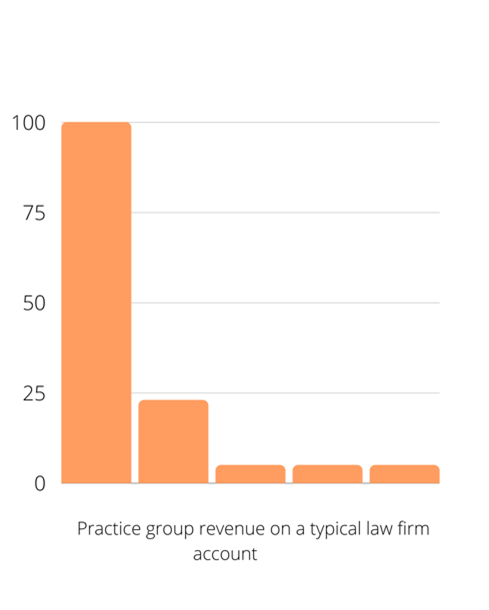PSFI partner Toby Hoskins looks at the art of collaboration and why it’s so difficult for law firms to get right. He also considers why trust, courage and leadership are so important.
Driven by market pressure to work more deeply with a fewer number of clients, partners are being challenged to work more ‘collaboratively’; to deliver the benefit of working with the whole firm rather than just a discrete part of it. Talk of collaboration has been fuelled by Heidi Gardner’s extensive and continued work on the subject.
Law firms seem to accept Gardner’s assertion that better returns come from collaboration; that revenues and margins increase where the firm creates truly collaborative accounts. It explains why firms are building key account programmes, increasing sector focus, structuring global fee deals, investing in certain markets, and increasing their focus on management and leadership.
Given that many firms describe themselves as highly collaborative, it should be straight forward. However, although many firms collaborate very well on specific matters, they find it harder to collaborate on an ongoing key account.
Why might this be and what can be done about it?
Collaboration cuts across the autonomy of partners. Who owns a client? The firm or an individual partner or maybe a practice group, sector or geography? Many firms appoint a client leadership partner (CLP) to a key account but their authority is often ambiguous. Individual partners face a choice, collaborate and build or gate keep. The decision then often hinges on trust. Is a particular partner confident or brave enough to trust the rest of her firm? The trust answer is often partly yes and partly no.


Partners tend to do what they get paid to do, in that they are very mindful of the metrics that measure their performance. PSFI research has shown how difficult it is to reward ‘abstract’ concepts such as collaboration or innovation, compared with financial measures like personal chargeable hours and utilisation. Partners respond to the financial metrics in different ways; some allow them to restrain and contain them, yet the real high performers do the right things, like collaborating, despite the metrics! So is this metrics or do partners actually need help in executing challenges like innovation and collaboration?
Team building is difficult in a matrixed, knowledge based organisation. Exceptional account teams are rare in any kind of professional services firm. PSFI research has explored what partners as leaders have to do to create an exceptional team. A CLP needs to build a leadership team of fellow partners on a key account, not just a matter execution team; she needs to invest as much time in the team as she does in the client. No partner can be over networked within their own firm, however good she is.
But there are two issues that trump all the above (or should we now say Biden all the above).
The first key issue is the collaborative behaviours of the partners. To handle issues of trust you have to know your work colleagues to some extent, otherwise misunderstandings happen and collaboration can’t happen. When firms were just a single office with say forty partners it was easy to bond in the partners dining room, but now there may be over a thousand partners spread across the globe. So how do partners get to know their partners they most need to work with? How can they understand each other and have the sometimes difficult conversations that allow true collaboration?
Recent work linked to Heidi Gardner’s research has identified seven dimensions of smart collaboration (wary vs trusting, complex vs concrete, risk spotter vs risk seeker, close vs distant, hands on vs hands off, responder vs initiator, individual vs group). There is no right profile, but partners understanding their own preferences and the preferences of those with whom they wish to work, enables much greater collaboration. A partner who is seen as a micro manager can be understood much better on the hands on/hands off axis or a partner who pours cold water on great ideas can be understood on the risk seeker/risk spotter axis. It helps partners embrace the differences that fellow partners bring and proves the inescapable fact that diverse teams outperform homogeneous teams.
The final issue is leadership and courage. If a firm wants a more collaborative firm, with more multi revenue stream accounts, with better revenues and margins then leaders need to see this more as an exercise in change rather than just a tweak to the great firm that currently exists. That is not to over complicate actions, but it does encourage a mind-set shift which allows all partners to be bold and brave in having the enabling (and sometimes difficult) conversations that will lead to desired goal.
If the above article resonates with you, or you would like to make your firm more successful, then Toby would love to talk to you. Email him now at toby.hoskins@psfi.org
Toby Hoskins is a founding Partner of PSFI. His insights are the result of working in professional services for over 30 years in diverse roles in practice, in business development and HR. His clients value his diagnostic skills, his ability to spot patterns and provide practical solutions. His specific interests include professional services firm strategy; enhancing leadership; talent development; and how partners and firms win work.
Is the office obsolete?
Mike Mister, a Partner at PSFI, discusses whether in office working is essential or expendable and what the longer term effects might be from working in an increasingly remote environment. Just going to pop into the office. Doesn’t that sound...
